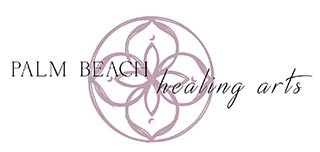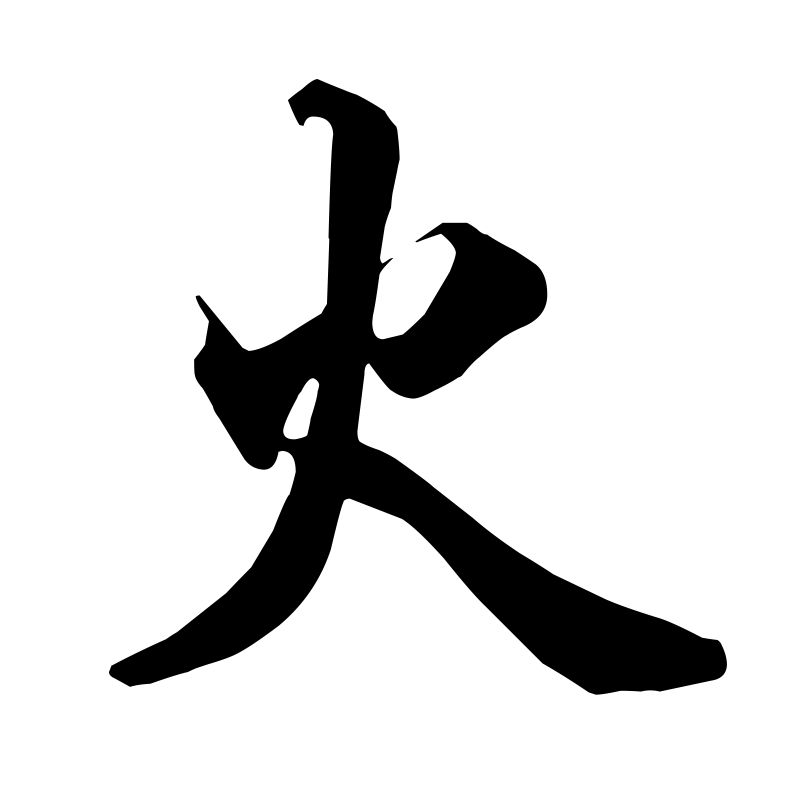“The heart holds the office of emperor and is the issuer of spirit clarity”
– Su Wen – Basic Questions, Chapter 8 –
In Chinese Medicine there are {to my knowledge thus far}, two different ways of perceiving the order of Qi circulation {energy} through the 12 main meridians of the human body. In Traditional Chinese Medicine, the circulation is traditionally started with the Hand Taiyin meridian, or the Lung meridian, and flows through the channels as per their internally and externally related channel pairs as well as corresponding to their channel names. In the 5 element tradition of JR Worsley, the channel circulation is in the same sequential order, however the circulation begins with the Heart meridian, or Hand Shaoyin. The emphasis of beginning with the Heart in this tradition is because the Heart is sovereign amongst the organs systems – it is the domain of our minds, our hearts, our spirit, our consciousness, and our guiding principle (1). So with the advent of Palm Beach Healing Arts, and this {mine and Sarah’s} practice finally coming to realization and manifesting before my very eyes, I wanted to start my blog for PBHA with information for my patients and readers about the energetics of the Fire Phase, as this practice has been a seed in my heart for some time now, and is the driving purpose of my life – to help as I may, all beings, get a little closer to happiness and know the source of happiness; to alleviate as much, if any, suffering and pain as possible, and to walk a path of right livelihood, contributing to the greater good of all beings, starting here at home, in my community. The following excerpt will be the first of five exploring the Five Phases that comprise a very significant aspect of Chinese Medicine. I hope that you enjoy reading, I honor your journey, and I look forward if possible, to working with you on a life path toward greater balance, wisdom, health, contentment, and peace. NAMASTE (2).
1. {I must mention here as an aside, that when we refer to ‘organs’ in Chinese medicine, they both correspond to the same material and physiological organs that we understand from a limited Cartesian sense and yet expand also to include a much more dynamic, symbolic, and encompassing physiology that includes aspects of spirit, personality, archetype, and embodiment of various aspects of nature as microcosom is to macrocosom. — More on that in a separate blog ; ) }.
2. namaste ~ I honor the place within you, that is within me – a place of light and spirit that is also of the universe -a place of love, light, truth and peace; and when you and I are in that place, we are one.
THE ENERGETICS OF THE FIRE PHASE IN CHINESE MEDICINE
The Fire Phase is most clearly represented in nature through the power of the sun – the center of the solar system. It provides warmth and light for all beings on earth, and we are dependent upon the sun for life itself. Similarly, the Fire Phase within each of our individual beings physically manifests as warmth, and is the source of our metabolic fire, as well as the moving force behind our consciousness. The four Officials of the Fire Phase regulate our body temperature, and emotionally the Fire Phase manifests as joy. Sharing and communicating effectively with others, while cultivating and maintaining satisfying relationships is additionally dependent on balanced Fire.
Some of the resonances of the Fire Phase include the color red, the sound of laughter, a scorched odor, a bitter taste, the power of maturity, and via the sense organ of the tongue, the Fire phase is in command of speech. Additionally, its energy is manifested in each of our complexions. Physiologically, the Fire Phase rules the blood as well as the blood vessels, and is governed by the muscle and organ of our physical heart.
Unlike the other Phases, Fire has two yin and two yang “organs” – the Heart, Pericardium (Heart Protector), Small Intestine, and San Jiao (Triple Burner). Because the Pericardium and the San Jiao are not true organs, they are often considered “functional organs,” or just representatives within the body that operate on a functional level. Anatomically within the body, the pericardium is the sac that surrounds the heart, while the Triple Burner refers to the three areas within the torso – “the three Jiao” – or three burning spaces. The domain of the upper burner is from the solar plexus up and contains the lungs the pericardium, and the heart, the middle burner lies between the solar plexus and navel and contains the liver, gallbladder, spleen, and digestive fire of the stomach, and the lower burner lies below the navel and governs the small intestine, and the organs of elimination – the large intestine, the kidney, and bladder. Like the other elemental systems, each aspect of the Fire Phase holds a yin and a yang designation and function and the organs are ‘internally and externally related.’ The Heart is yin to its yang Small Intestine, while the Pericardium is yin to its yang San Jiao.
In Chinese Medicine the Heart has a dual role – it is an organ, a muscle that pumps blood and governs the vessels, and it is also the domain of our shen, or our mind-spirit. Both our mental activity, as well our consciousness ‘reside’ within the Heart, and the state of both the heart as well as the blood determine our emotional state, our thoughts, our memory, and the quality of our sleep. The Heart therefore commands significant import in relationship to the rest of the Organ systems – each mental and spiritual aspect of the other yin organs {hun, po, yi, zhi, shen (ethereal soul, corporeal soul, intellect, will, and mind)}, are dependent upon the Heart shen, which is sovereign.
Lonney Jarret aptly summarizes the functions of the Heart meridian as follows: Empowering recognition of one’s true self, initiating actions congruent with one’s true self, coordinating the functions of the twelve other officials, empowering effortless control that flows from our intuition, and the ability to clearly acknowledge reality.
“The Heart channel begins in the center of the Heart’s complementary yang official, the Small Intestine. Another branch ascends through the esophagus to the eye. This branch allows for the radiation of our heart spirit into the world as the brilliance in our eyes and allows the heart to receive life directly through the eyes in a way that empowers intuition. A third branch ascends through the aorta, passes through the lungs, and travels to the axilla, where the heart channel runs down the inner forearm to the inner nail point of the little finger.” Where the heart channel ends is where the small intestine channel begins – superficially at the ulnar nail point of the little finger at Xiao Ji, Little Happiness. It then “ascends the posterior surface of the arm to transverse the rear of the scapula and arrive at the median line below the seventh cervical vertebrae at DU 14. From Du-14 the pathway proceeds internally and runs anterior through the shoulder to St-12, where it divides into a superficial and a deep branch. The internal branch descends to the median line and meets the heart at CV-17. This branch passes through the stomach at CV-12 and CV-13 where it connects with its organ, the small intestine. The superficial branch of the channel ascends the lateral aspect of the neck through SI-16 and then crosses the mandible to ascend the cheek and reach its termination point at SI-19 in front of the tragus of the ear. An internal pathway ascends from SI-18 to meet GB-1 at the lateral canthus of the eye and then proceeds to SI-19. Another deep branch leaves SI-18 to ascend to the medial canthus of the eye, where it joins the bladder channel at UB-1.” [ii] The small intestine is the yang official that complements the Heart. “The small intestine’s function is to convey with absolute fidelity the heart’s intentions into the world through both speech and action.”[iii] “The Small Intestine is responsible for receiving and making things thrive. Transformed substances stem from it.”[iv] It is through the small intestine organ that we sort, separate, and choose what to keep and what to discard – on both a physical, mental, and spiritual level. Physically, the small intestine is the site within the body where we extract nutrients into the blood from food, pass on to the large intestine impure substances for elimination, and pass water to be reabsorbed to the bladder. On an energetic level, the small intestine is responsible for assisting us in the ability to choose wisely, what to absorb and take in (relationships, items, thoughts, choices) and what to discard or separate from. Emotionally, the small intestine is responsible for ‘burning away’ any inessential sentiments to “ensure that only refined essence is communicated to the heart.” For instance, if fire is excessive and the shen becomes disturbed and the small intestine is unable to clearly discern the clear thoughts from those that are in rage, delirium and mania can result, and this can even be characterized by hallucinations, delusions, and excessive talking unfiltered by the healthy mind’s ability to sort.[v] When the small intestine energy is imbalanced in a person they have a difficult time determining what they need to choose between, and there is marked ambivalence, and even an inability to commit to a course of action because it is hard for them to sort out which direction to go. Being a fire official, the small intestine both requires heat to function in order to initiate it’s transformative role, and yet is prone to becoming overheated if there is unrecognized desire that has built up in the heart that then gets transferred to the small intestine. This can manifest physically as bladder infections, prostatitis, or even just a building up of toxicity as the body is unable to sort, and inflammation in the joints, skin, nerves, or digestive tract may appear. Like the Heart, the small intestine is needed to function properly in order for our intuition to function well and for our minds and hearts to be clear. As the channel ascends toward the ear, the eyes, and through the jaw, we can see the way its proper function implicitly determines clarity of function in these sense organs of insight, listening, intuition, and speech. “The Envelope of the Heart (Pericardium) represents the civil servants; from them can come joy and pleasure” ~ Su Wen, Chapter 8 The second yin organ that belongs to the Fire Phase is the Pericardium, or the Heart Protector. The Heart Protector is just that – the guardian of our Supreme Controller. “The Supreme Controller is like an emperor who does nothing but act as the spiritual link, half-human and half-god, between the Earth and the Heavens. This delicate role requires protection. The Heart-Protector protects the Heart and decides who should get in, who should be kept out. When the heart is properly protected joy and pleasure can arise.”[vi] This channel runs parallel to the Heart channel on the medial aspect of both forearms, and like the Heart channel, also has 9 points. “The Heart Protector meridian begins in the pericardium and travels superficially to emerge at CV-17, between the nipples, in the center of the upper jiao. One branch descends the midline to pass through CV-12 and terminate at CV-7 just below the umbilicus in the lower jiao. A second branch runs laterally to emerge at the nipple in the fourth intercostal space. From here it arches over the axilla and runs down the anterior aspect of the arm, through the middle of the wrist and hand, to end at PC-9, the radial nail point of the middle finger. An internal branch splits at PC-8, the channel’s exit point, and travels to the ulna nail point of the ring finger where it connects with the three heater channel at its entry point, SJ-1.”[vii] While the Heart Protector’s role is extremely important, understanding it is relatively simple. Acting as a servant to the Heart, the Pericardium is responsible for being flexible and being able to clearly define which, and in what circumstances, select people allowed in and kept out from the Heart’s chamber. The Heart Protector clearly manages the “variations in openness and thus produces what we might call ‘appropriate behavior. When the Heart Protector is weak, a person will often demonstrate a lack of awareness of context.”[viii] Dysfunction of the Heart Protector often results in being unable for one to protect their heart, acting overly sensitive, or feeling some sort of consistent pain of rejection. This can also manifest then in the opposite direction as a constant need for physical and emotional intimacy, and an attempt to achieve that, even sometimes inappropriately may be made constantly – for example, overly seeking others approval. As the Pericardium is also a Fire Official, it carries an additional role in providing warmth, or rather mediating warmth between the Heart and the Kidneys. The Kidneys are also a source of physiological ‘fire,’ the fire of mingmen, and as the protector of the Heart, the Pericardium has to facilitate open communication between the Heart and the Kidneys in order to keep that axis in harmony, mediating the relationship of our genetic and inherited constitution with that of our acquired essence – again, between our shen and jing. True harmony between the Heart and Kidneys is essential for our mental, physical, and energetic health, and the Pericardium helps to facilitate this communication, thereby assisting the Supreme Controller. The Pericardium’s yang, externally related official, the San Jiao, is also an official of balance and harmony. Again, the San Jiao acts functionally, but does not actually represent a true organ in the western physiological sense. The channel begins at the “ulnar nail point of the ring finger and runs over the back of the hand and posterior surface of the forearm to the back of the elbow. From here it ascends the upper arm to the shoulder and then the neck, winds around the ear and then crosses over the temple to the end at the outer extremity of the eyebrow. Here is joins the Gallbladder channel at GB1.” There are several branches of the San Jiao meridian, each of which traverse the three jiao and return to meet with the main meridian. Within the body, we have our three “burning spaces,” and it is within these spaces that it is said transformation occurs. “The Triple Burner is responsible for opening up the passages and irrigation. The regulation of fluids stem from it.”[ix] Each burner is responsible for taking in air, food, and drink, and transforming, absorbing, and excreting what is useable, and that which must be discarded. “With respect to fluids, the upper jiao is compared to a mist. The middle jiao is compared to a maceration chamber or muddy pool and the lower jiao is described as a drainage ditch.”[x] Pathological changes of the San Jiao typically appear in the area that is affected, which is why when working on specific organ pathologies, regulating the San Jiao is so important. On an energetic level, the Triple Burner regulates a smooth flow of qi throughout the entire body, and specifically distributes the yuan qi from the jing to each of the yuan source points throughout each of the twelve channels. Yuan qi is a form of essence that has a more dynamic and rarefied form with it’s origin in the Kidneys. This original qi is the motivating and dynamic force for the functional energy of each of our organs, and it is the Triple Burner that differentiates this qi for its use throughout the body. The San Jiao is also responsible for the protective function of our wei qi, and this is reflected in the location of the channel on the outer surface of the arms. The San Jiao also functions to maintain homeostasis, by facilitating communication between the organs, and all of the aspects of our being, helps to communicate with our environment, and assists with the regulation of social relationships. “The title, “the Official of Balance and Harmony” accurately describes the crucial regulatory functions of the Official.”[xi] Endnotes [i] Jarret, Lonny. The Clinical Practice of Chinese Medicine. Spirit Path Press, 2006. 339. [ii] Jarret, Lonny. The Clinical Practice of Chinese Medicine. Spirit Path Press, 2006. 352. [iii] Jarret, Lonny. The Clinical Practice of Chinese Medicine. Spirit Path Press, 2006. 362. [iv] Su Wen Chapter 8, Larre and Rochat de la Vallee, 1992. The secret Treatise of the Spiritual Orchid. Cambridge, Monkey Press. 107. [v] Jarret, Lonny. The Clinical Practice of Chinese Medicine. Spirit Path Press, 2006. 360. [vi] Hicks, Hicks, and Mole. Five Element Constitutional Acupuncture. Elsevier, 2004. 91. [vii] Jarret, Lonney. The Clinical Practice of Chinese Medicine. Spirit Path Press, 2006. 460. [viii] Hicks, Hicks, and Mole. Five Element Constitutional Acupuncture. Elsevier. 2004. 91 [ix] Su Wen Chapter 8, Larre and Rochat de la Vallee, 1992. The Secret Treatise of the Spiritual Orchid. Cambridge, Monkey Press. 129. [x] Hicks, Hicks, and Mole. Five Element Constitutional Acupuncture. Elsevier, 2004. 94. [xi] Felt R, Zmiewski P 1989 Acumoxa therapy. Brookline, MA: Paradigm Publications, vol 1. Image credit: kentoh / 123RF Stock Photo



